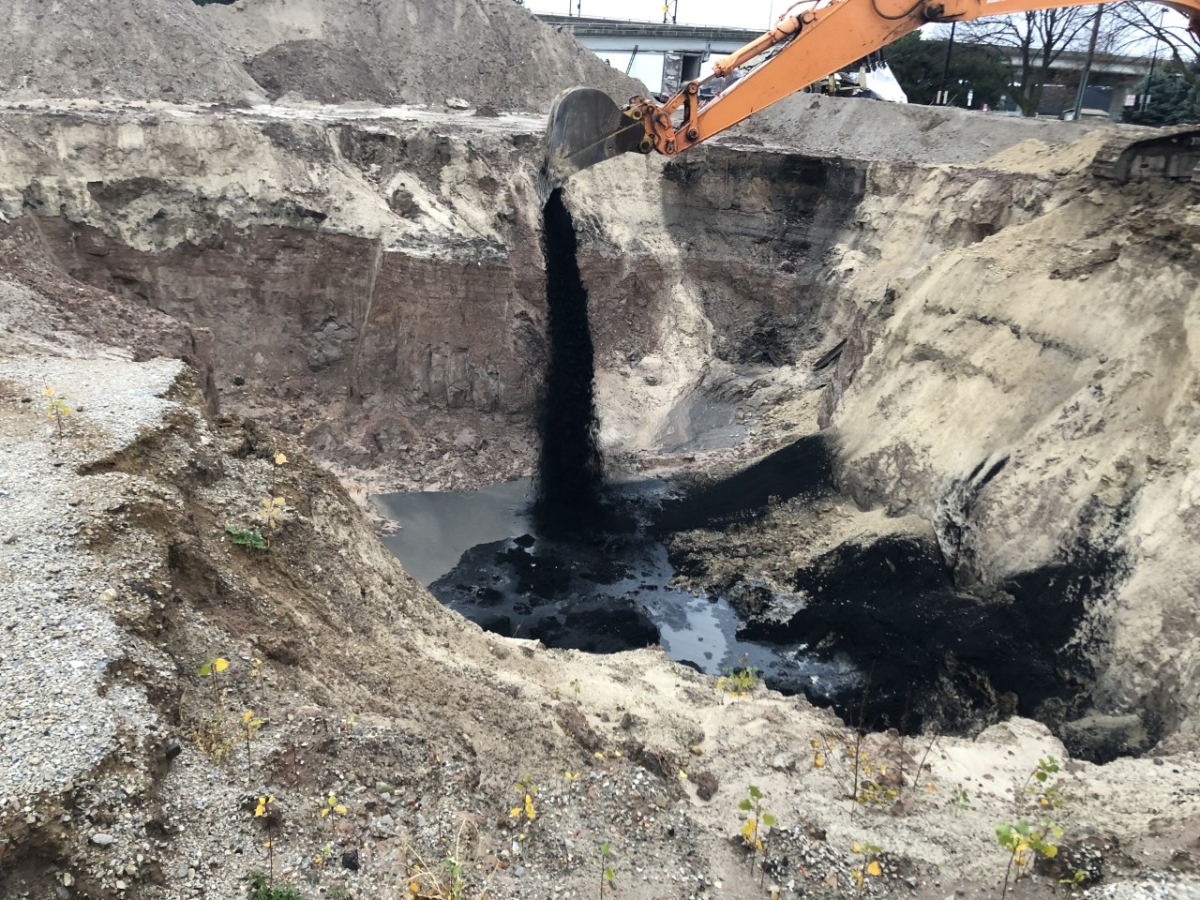PFAS remediation technologies for cleaning up soil and groundwater
The high resistance of per- and polyfluoroalkyl substances (PFAS) chemicals to heat, water and oil makes them useful for a range of commercial and industrial applications. However, these commercially valuable qualities also impede environmental remediation. The limited reactivity of PFAS chemicals inhibits their combination with other elements and prolongs their natural decomposition. Widespread use of such invulnerable substances contributes to their environmental persistence and warrants the foreboding moniker as "forever chemicals." Over a lifetime of exposure, PFAS bioaccumulates in human and animal tissues and could lead to adverse health effects.
Destroying these chemicals poses a significant challenge, particularly once they mix with soil or groundwater. When the U.S. Environmental Protection Agency (EPA) updated health advisory levels for PFAS chemicals — specifically perfluorooctanoic acid (PFOA) and perfluorooctane sulfonate (PFOS) — it triggered an extensive exploration of remediation technologies. Because of the chemicals' seemingly impervious nature, most PFAS remediation methods are still in laboratory testing phases or limit use to small-scale contamination sites. Below, we discuss some promising techniques with the potential to remediate contaminated soil and groundwater on a larger scale.
PFAS remediation technologies for contaminated soil
Most traditional remediation methods have proven unsuccessful at reducing or removing PFAS from contaminated soil. However, some innovative remediation technologies used in the field, explored on a pilot basis or tested in laboratories include:
- Immobilization method: As an in-situ, cost-effective soil remediation method, immobilization adds reagents to contaminated soil to produce less toxic and insoluble compounds or by-products. Carbon's non-polar functional groups help absorb hydrophobic contaminants like PFAS, which demonstrates how firmly carbon sorbents can bind and restrain soil pollutants. Carbon sorbents fall under one of three categories — multiwalled carbon nanotubes (CNTs), powdered activated carbon (PAC) and granular activated carbon (GAC). Although CNTs and PAC have higher sorption capacities, GAC is the most widely used stabilizing agent for PFAS remediation. GAC has been effective in remediating PFAS-contaminated soil at former dry-cleaning sites. Technicians can use this stabilizing agent at contaminated sites in many ways — by injecting GAC into the soil, mixing it with the soil to decrease chemical concentrations or placing it at an excavation base to prevent chemicals from seeping further into the water table. The immobilization method using GAC best suits contamination sites with low PFAS soil concentrations.
- Soil washing, thermal treatment, excavation and ex-situ: Although these PFAS remediation technologies have been tested in the field, they are energy-intensive and costly. The washing method requires large quantities of solvents to wash PFAS-contaminated soil. Thermal treatments use extremely high temperatures because PFAS chemicals have such high melting points, which results in steep energy costs. In addition to higher costs, excavation and ex-situ (off-site) treatment methods increase waste production and risk of exposure to contaminated soil.
- Additional methods: Soil remediation technologies, such as chemical oxidation, ball milling and electron beam, are undergoing laboratory testing. Their feasibility and cost-effectiveness for PFAS removal remain undetermined.
Research into bioremediation methods for soil contaminated by PFAS is also ongoing, but offers some surprising results. Because scientists never hypothesized microbes were capable of breaking down these chemicals, bioremediation of PFAS remains a largely unexplored solution. However, technicians conducting a Wisconsin pilot project injected PFAS-eating microbes into the ground and created artificially optimized growing conditions. After 10 weeks, the site showed a significant reduction of PFAS contaminants. This technology, however promising, is still in the early stages of field testing and will require additional tests prior to large-scale implementation.
PFAS remediation technologies for contaminated groundwater
More than 40% of drinking water in the U.S. originates from groundwater contaminated by mixing with PFAS-contaminated soil. With the EPA's drinking water health advisory updates for PFAS chemicals, demand for groundwater remediation technologies has dramatically increased, matching growing public concern to protect communities from potential health hazards. Some of the PFAS remediation techniques for contaminated groundwater include:
- Groundwater extraction and filtration: One of the most common treatment methods, this approach uses interceptor walls to pump groundwater to the surface and filters out PFAS using GAC. The pump-and-treat approach has been widely used to prevent contaminants from migrating. However, this method generates significant amounts of hazardous waste as PFAS-contaminated spent carbon. Disposing of the waste via incineration or landfill is costly and may further contaminate the surrounding air and soil with PFAS.
- Photocatalysis: Degrading PFAS using UV and visible light has the potential to emerge as a cost-effective alternative to PFAS removal in groundwater. Because this type of treatment needs powerful light energy, it remains in the testing phase. In the future, solar irradiation for PFAS photocatalysis could be a game-changer for groundwater remediation.
- Electrochemical and membrane filtration: Photocatalysis can also be combined with electrochemical and membrane filtration for a more effective groundwater remediation treatment. Although nanofiltration membranes are highly efficient in removing PFOA from groundwater, higher PFOA concentrations and water pressure can increase filtration operating costs. In-situ filtration using Colloidal Activated Carbon (CAC): This method deposits a permanent carbon coating over aquifer materials like sand. The CAC-treated area works as an in-ground filter to remove PFAS from groundwater. While promising, it is still too early to implement this nascent remediation approach on a larger scale.
At spill sites with shallow water tables, technicians often implement PFAS remediation technologies with GAC for soil and groundwater together. Some municipalities are considering pilot projects for removing PFAS from groundwater using more innovative technologies like PFAS-attracting bubbles and biosensors. However, determining the most efficient, innovative and cost-effective PFAS remediation technology for your community requires help from an expert.
Partnering with an environmental expert to determine the best PFAS remediation technologies
At Fehr Graham, we have provided engineering and environmental consulting services to municipalities and communities since 1973. We understand the challenges community leaders face to comply with proposed regulatory agency standards and the proposed enforced standards for PFAS chemicals. Whether you need help determining the most effective remediation methods or overcoming budgetary constraints, the professionals at Fehr Graham care about improving the quality of everyday life for all community members. Our team of environmental engineers is committed to performing site cleanups and PFAS removal in compliance with federal regulatory standards. We also help municipalities secure funding resources for PFAS investigation and remediation.
To learn more about how Fehr Graham can help you with PFAS remediation technologies for soil and groundwater, contact us or give us a call at 920.453.0700.
 |
Dillon Plamann is a Project Hydrogeologist who helps with soil and groundwater investigations, remedial activities, due diligence and building material assessments. He also works on reports, work plans, proposals, budgets, and Phase I and II Environmental Site Assessments. Contact him at |
Collaborative, Insightful, Results-Driven Solutions
Fehr Graham provides innovative engineering and environmental solutions to help improve the lives and communities of our customers.

